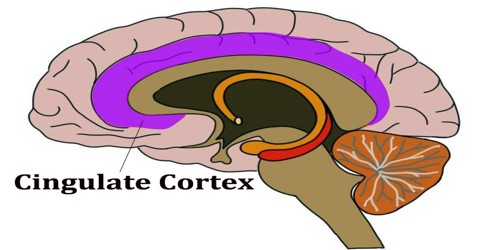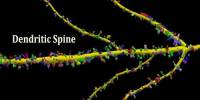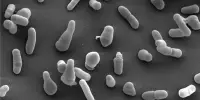Cingulate Cortex
Definition
Cingulate cortex is a part of the limbic cortex, a term referring to the cortical areas that receive axonal fibers from neurons in the anterior group of thalamic nuclei. It includes the entire cingulate gyrus, which lies immediately above the corpus callosum, and the continuation of this in the cingulate sulcus. The cingulate cortex is usually considered part of the limbic lobe.
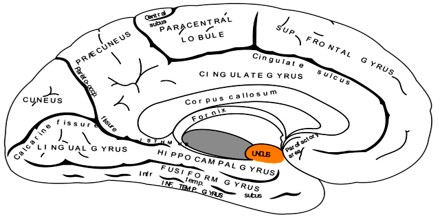
It is located at the front of the corpus callosum which connects the left and right hemispheres of the brain. It is an integral part of the limbic system, which is involved with emotion formation and processing, learning, and memory. It is responsible for many psychological and physiological functions. It also regulates blood pressure and the heart rate. Its psychological functions include decision making and evaluation processes, emotional regulation, preparation for tasks, error detection, and executive functions. The cingulate cortex consists of the cingulate gyrus–which sits just above the corpus callosum–as well as the adjacent cingulate sulcus.
Structure and Functions of Cingulate Cortex
The most common method of dividing the structure is to split it into anterior and posterior regions; each is thought to be involved with different tasks.
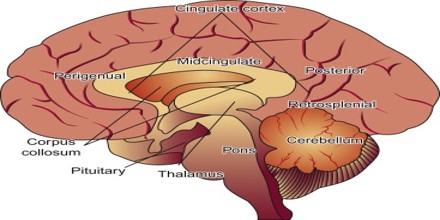
The anterior cingulate cortex, or ACC, is found at the front of the cingulate cortex and wraps around the head of the corpus callosum. It is cytoarchitectonically agranular. It has a gyral and a sulcal part. Anterior cingulate cortex can further be divided in the perigenual anterior cingulate cortex (near the genu) and midcingulate cortex. The ACC also seems to contribute to the regulation of autonomic and endocrine responses, pain perception, and the selection and initiation of motor movements. Additionally, there are other areas of the ACC that are involved in various aspects of cognition ranging from decision-making to the management of social behavior.
The posterior cingulate cortex, or PCC, lies just behind the anterior cingulate. Its cellular structure is granular. The posterior cingulate cortex receives a great part of its afferent axons from the superficial nucleus (or nucleus superior- falsely LD) of the thalamus, which itself receives axons from the subiculum. The PCC is also considered part of the default mode network, a group of brain structures that are more active when an individual is not involved in a task that requires externally-focused attention.
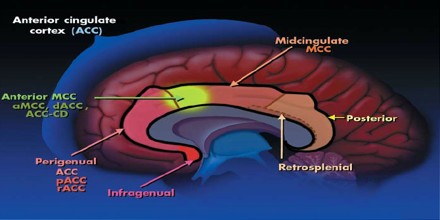
The connections of the cingulate cortex to other brain structures are extensive, and thus the functions of the region are varied and complex. Although there is much still to be learned about the roles of the cingulate cortex, it seems clear it makes important contributions to emotion, various types of cognition, and a number of other physiological functions.
